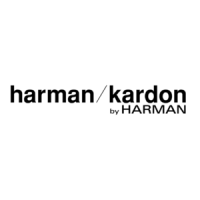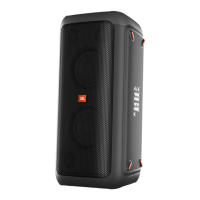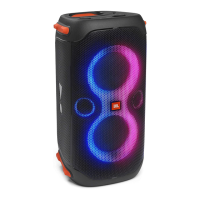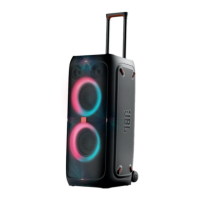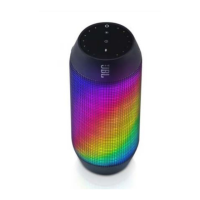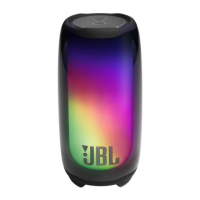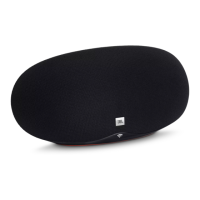3
co-channel mobile satellite systems; (ii) the maximum antenna
gain permitted for devices in the bands 5250-5350 MHz and
5470-5725 MHz shall comply with the e.i.r.p. Limit: and (iii)
The maximum antenna gain permitted for devices in the band
5725-5825 MHz shall comply with the e.i.r.p. Limits specied for
point-to-point and non-point-to-point operation as appropriate.
(iv) Users should also be advised that high-power radars are
allocated as primary users (i.e. priority users) of the bands 5250-
5350 MHz and 5650-5850 MHz and that these radars could
cause interference and/or damage to LE-LAN devices.
Exposure of humans to RF fields (RSS-102)
The computers employ low gain integral antennas that do not
emit RF eld in excess of Health Canada limits for the general
population; consult Safety Code 6, obtainable from Health
Canada’s Website at http://www.hc-sc.gc.ca/
The radiated energy from the antennas connected to the wireless
adapters conforms to the IC limit of the RF exposure requirement
regarding IC RSS-102, Issue 5 clause 4. SAR tests are conducted
using recommended operating positions accepted by the FCC/
RSS with the device transmitting at its highest away from the
body. Non-compliance with the above restrictions may result in
a violation of FCC RF exposure guidelines.
Use Restriction: Attention in France, the operation is limited to
indoor use within the band 5150-5350 Mhz.
For Products with Radio Receivers That Can
Use an External Antenna (USA ONLY)
CATV (Cable TV) or Antenna Grounding
If an outside antenna or cable system is connected to this
product, be certain that it is grounded so as to provide some
protection against voltage surges and static charges. Section
810 of the National Electrical Code (NEC), ANSI/NFPA No. 700-
1984, provides information with respect to proper grounding of
the mast and supporting structure, grounding of the lead-in wire
to an antenna discharge unit, of grounding conductors, location
of antenna discharge unit, connection to grounding electrodes
and requirements of the electrode.
Note to CATV System Installer
This reminder is provided to call the CATV(cable TV) system
installer’s attention to article 820-40 of the NEC, which provides
guidelines for proper grounding and, in particular, as close to the
point of cable entry as possible.
Caution: This product uses a laser system. To prevent direct
exposure to the laser, do not open the cabinet enclosure or defeat
any of the safety mechanisms provided for your protection. Do
NOT START INTO THE LASER BEAM. To ensure proper use of
this product, please read the owner’s manual carefully and retain
it for future use. Should the unit require maintenance or repair,
please contact your local JBL service. Refer servicing to qualied
personnel only.
FOR ALL EU COUNTRIES
For products that include audio out
Prevention of hearing loss
Caution: Permanent hearing loss may occur
if earphones or headphones are used at high
volume for prolonged periods of time.
For France, the products have been tested to
comply with Sound Pressure Level requirement
laid down in the applicable NF EN 50332 L.5232-1.
Note:
– To prevent possible hearing damage, do not listen to high volume
levels for long periods.
WEEE Notice
The Directive on Waste Electrical Equipment (WEEE), which
entered into force as European law on 14/02/2014, resulted in
a major change in the treatment of electrical equipment at end-
of-life.
The purpose of this Directive is, a rst priority, the prevention of
WEEE, and in addition, to promote the reuse, recycling and other
forms of recovery of such wastes as so as to reduce disposal.
The WEEE logo on the product or on its box indicating collection
for electrical and electronic equipment consists of the crossed-
out wheeled bin, as shown below.
This product must not be disposed of or dumped with
your other household waste. You are liable to dispose
of all your electronic or electrical waste equipment by
relocating over to the specied collection point for
recycling of such hazardous waste. Isolated collection
and proper recovery of your electronic and electrical waste
equipment at the time of disposal will allow us to help conserving
natural resources. Moreover, proper recycling, and collection
points, please contact your local city center, household waste
disposal service, shop from where you purchased the equipment,
or manufacturer of the equipment.
RoHS Compliance
This product is in compliance with Directive 2011/65/EU of the
European Parliament and of the Council of 8 June 2011 on the
restriction of the use of certain hazardous substances in electrical
and electronic equipment.
For Products that includes Batteries
EU Batteries Directive 2013/56/EU
A new battery directive 2013/56/eu on Battery and Accumulator
replacing directive entered into force on the 01/07/2015. The
directive applies to all types of batteries and accumulator
(AA, AAA, button cells, rechargeable packs) including those
incorporated into appliances except for military, medical
and power tool applications. The directive sets out rules for
collection, treatment, recycling and disposal of batteries, and
aims to prohibit certain hazardous substances and to improve
environmental performance of batteries and all operators in the
supply chain.

